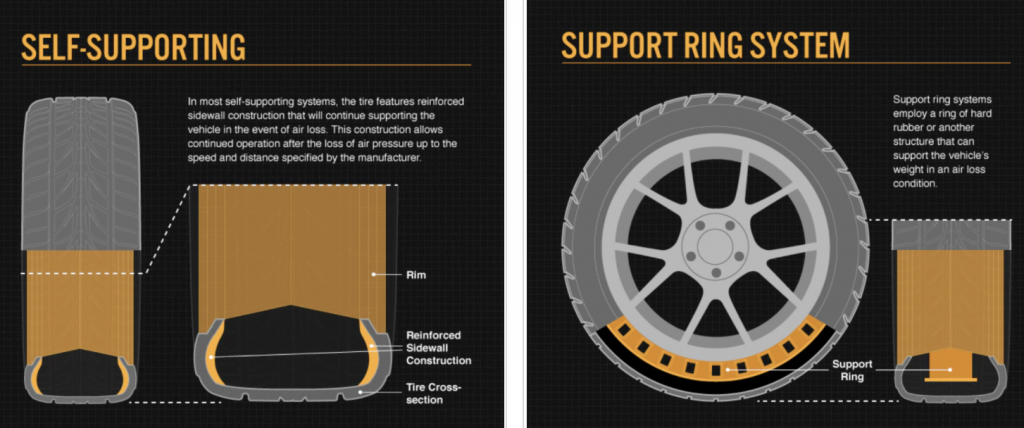Auto Tips: Know the Pros and Cons of Run-flat Tires
In the spring, I was out in the city forest walking with my friend and our dogs. When we got back to the cars, she had a flat tire. When I was younger I had taken a ladies car maintenance course (yes there was such a thing), and I offered to change her flat. To my surprise she told me there was no spare tire. On further questioning, she said that the car originally had run-flat tires, but this tire was a replacement and was not a run-flat. Unfortunately, the only solution was to get a tow truck. Clearly, there are some disadvantages to having a vehicle that has no spare tire.
Many vehicles are now equipped with run-flat tires. These tires let you continue driving for nearly 160 kilometres after a tire puncture or blowout occurs. Such tires allow you extra time to get to a safe, convenient location for a tow or tire replacement.Run-flat tires generally function like regular tires, with a few notable differences. Here are the pros and cons of these tires.
Why have manufacturers ditched the spare?
According to Consumer Reports about 33% of cars do not have a spare tire. The option is a fix kit equipped with a compressor and sealant kit to temporarily fix a flat tire. Some cars without spares come with “run-flat” tires, which are designed to operate for a limited distance after losing air from a typical puncture.
There are three main reasons for skipping the spare
1. Regulatory pressure to squeeze more miles out of every gallon of fuel: Removing the 18-22 kg that a tire and jack add to a car’s weight helps to increase fuel economy slightly.
2. Auto manufacturers profits increase because they don’t have to pay for those parts.
3. Adds much needed storage space – especially in smaller and sporter models.
When buying a car – new or used – ask the question about the spare tire, or lack of. Get educated on what to do in the event you have a flat tire.
Pros of run-flat tires
More stability: Run-flat tires allow you to maintain better control in a total air-loss situation. ·
No need for a spare: By having run-flat tires, you won’t need to worry about carrying a spare tire or changing a damaged tire immediately in a potentially unsafe location. ·
Extra reinforcement: Run-flat tires possess added sidewall reinforcements, resulting in a firmer ride.
Cons of run-flat tires
Continued blowout risks: You must still adhere to tire range and speed limitations to avoid blowouts while driving with run-flat tires. ·
Cost concerns: Patching run-flat tires isn’t recommended, and these tires are more expensive to replace.

Resources: Know the pros and cons of run-flat tires
USA Today: Why automakers are ditching the spare tire
Edmunds.com: The disappearing spare tire
Reliance Blog: Winter driving
Reliance Insurance: Auto Insurance options




Reliance Insurance proudly serves
Burnaby and the Vancouver area